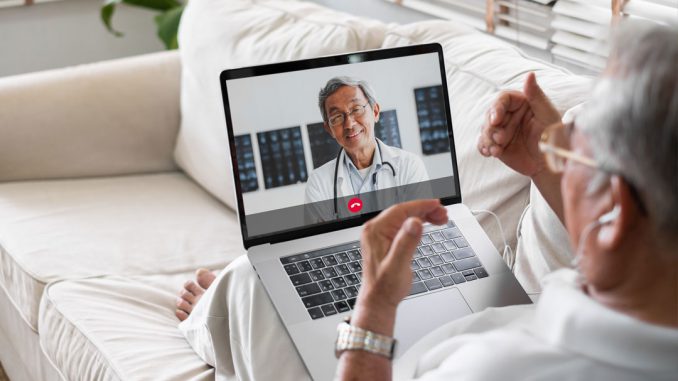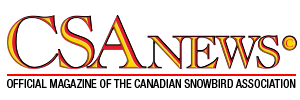
When I started my family practice in the mid-sixties, the availability of technology to assist in diagnosing and treating many conditions was very limited. Imaging was restricted to X-ray machines and ultrasound was just beginning to become available for limited use. CAT scans and MRI were not yet developed. Many patients with diabetes had to use a pin prick every day to determine their blood sugar and, if I drew a blood sample to be tested in a lab, I would get the result two days later. Cardiac evaluation was done with a stethoscope and an ECG machine (electrocardiogram). Brain evaluation was by physical evaluation, X-rays and possibly an EEG (electroencephalogram). No colonoscopy instruments were available. Lower bowel examination was limited to finger examination, X-rays and a short rigid examining tube (sigmoidoscope). Persons subject to dangerous and potentially fatal heart rhythms did not yet have the benefit of the life-saving pacemakers in common use today.
Our limitations were not confined strictly to diagnostic efforts, but also to treatment modalities. Microscopic and robotic surgery were not yet available and telemedicine technology − providing available expertise to remote physicians and hospitals − was unknown. Blood pressure measurement was only done in the office setting, thereby limiting the accurate assessment of hypertension and appropriate drug therapy. Home monitoring BP cuffs and Holter monitors were unavailable. Information from consultants and from any emergency room visits by my patients came back to me by mail some days later. Heart attacks were treated with bed rest, careful monitoring and drugs to help in preventing dangerous rhythm changes. Cardiac surgery − including bypass and coronary artery stents − were yet to be developed.
These are but a few of the examples of diagnosing and treating illnesses more than 50 years ago and how our health status has improved since the time before the advent of an explosion in the invention and availability of modern technology. In 1965, the life expectancy for Canadians was about 71 years from birth, whereas today it is higher than 82. In addition to improved public health measures, better pharmacotherapy and other factors, advances in medically related diagnostic and treatment technologies have made a tremendous difference.
Here are a few of the advances in technology that have become routine in disease prevention, diagnosis and treatment.
Home Monitors
Blood pressure readings are always more accurately assessed using home monitors. Available in wrist and upper arm models, they are affordable and useful in the measurement and recording of blood pressure away from the stressful doctor’s office or hospital. The results improve the doctor’s ability to more effectively manage hypertension. Patients with suspected heart conditions can be monitored at home by wearing a Holter monitor, which provides the physician with valuable information about the heart’s rhythm and rate over a 24-hour period. Diabetics can now more effectively control their sugar levels with a continuous glucose monitor, a small sensor worn under the skin which measures the patient’s sugar levels. These results are transmitted to a small, externally worn transmitter and then to a separate receiving device at home, or even to a smart phone. The system can now be connected to an insulin pump and software that allows for the infusion of insulin at rates determined by the glucose monitor. More accurate treatment of blood sugar levels is achieved, reducing the risk of hypoglycaemia (low blood sugar level).
Smart Phone Applications
There are numerous other apps that can be used with a smart phone or a wrist “watch” device. Many apps are available for download which help to keep you living a healthy lifestyle, that measure your heart and respiratory rate, number of steps that you take in a day, dietary habits and even sleeping patterns. For those who have suffered from episodes of atrial fibrillation, a heart condition more common in seniors, there are a number of apps available which can detect these episodes. This information is then given or transmitted to the physician for urgent management. Numerous police forces are now using phone apps to locate individuals who are lost, as well as GPS tracking systems which are available on most smart phones.
Security Devices
Many instruments can also be used in the event of a fall to initiate immediate response. For persons with dementia, there are a number of instruments available as solutions to address wandering. The phone or more commonly used hidden device on a person’s clothing or shoe becomes a life-saving location tool, allowing GPS tracking to quickly find the individual who has gone missing. For elderly persons who are frail or living alone, there are devices worn that will automatically send a signal to initiate a medical response. A major supplier of these devices in Canada is Philips Lifeline.
Imaging Technologies
Ultrasound machines came into routine use in the late sixties, CAT scans in the seventies and MRI in the eighties. All of these imaging techniques added greatly to prenatal care, earlier and more accurate diagnoses of many conditions and much earlier and more appropriate medical and surgical treatments. Ultrasound devices enable the examiner to visualize two-dimensional images in real time for diagnosis and treatment of many conditions. CAT scans (computerized axial tomography) are special X-ray tests that produce cross-sectional images of the part of the body being examined using X-rays and a computer. Earlier, more accurate diagnoses and the ability for detecting smaller abnormalities provides for much better care. MRI (magnetic resonance imaging) uses a magnetic field and computer-generated radio waves to create detailed images of tissues and organs in your body. No radiation is associated with MRIs and the technology allows for earlier and more accurate diagnosis in all areas of the body, especially in bone as well as soft tissues such as the brain.
Telemedicine
The diagnosis and treatment of patients by means of telecommunications technology has been greatly enhanced for those in more remote areas of the country. Family doctors, in particular, have been able to communicate with specialists through phone and by transmitting laboratory data, X-ray film and other diagnostic information to receive expert assistance in the patient’s management.
Robotic Surgery
Robot-assisted surgery is now used commonly in major surgical centres to allow surgeons to perform many types of complex operations with more flexibility, precision and control than is possible with conventional techniques. It is less invasive and can often be done through tiny incisions leading to fewer complications and speedier recoveries. It has even been done remotely, with the surgeon operating the robotic arms from another community.
Interventional Radiology
Only in recent years have radiologists emerged as major partners in treating, as well as diagnosing disease. With the use of imaging technologies, radiologists are able to treat a wide range of conditions by inserting various small tools such as wires or catheters into many different sites such as the heart (balloon angioplasty and coronary artery stents), the brain (certain type of stroke treatment), the kidney and ureters (stent insertion and stone management) and many other diagnostic and therapeutic procedures.
Internet Information
When I started practice, patients would often come into the office to ask about their symptoms or condition showing me an article from Reader’s Digest that they happened to see. Today, the information available to us for symptoms or diagnoses is abundantly available through the internet. Not only are there numerous reputable sites regarding how to keep healthy through diet, physical activity and lifestyle modifications, there are also sites that explain your particular condition and how it is best managed by you. A good example of this is The Heart and Stroke Foundation site for individuals with those conditions or at risk for them. You can now become an expert in helping to manage your own health and medical conditions, as well as your health-care providers’ involvement. This internet access has been a great help to doctors, as well. Using special programs, they are able to constantly keep up with diagnostic information, current therapies, potential drug interactions and other important data.
Emerging Technologies
Cochlear implants and even retinal implants have been used successfully for individuals with certain hearing and vision impairments, but now such brain computer interfaces are being developed to modify motor control by persons with Parkinson’s disease and brain implants and for persons paralyzed with spinal cord injury. For patients with COPD, sleep apnoea and cardiac conditions, personal pulse oximetry devices are now being made available that can measure not only oxygen saturation levels, but also temperature and blood pressure to a smartphone app.
